Roeburnscar is an idyllic 5 bedroom cottage on Backsbottom Farm and will be available for holiday lets from the end of September 2012. It is surrounded by a wildlife paradise of 240 acres of ancient woodlands, hay meadows and upland blanket bog. Sleeps 9, stabling for 3 horses, dogs welcome. No TV
Saturday, 11 July 2020
Friday, 26 June 2020
Hen harriers - an inconvenient truth
Guy Shorrock
19 Jun 2020
Natural England recently gave the green light
for the controversial hen harrier brood management scheme to go ahead
for a second year. However, has the government been sufficiently open
about events last year near the very first brood management site in a
notorious part of North Yorkshire?
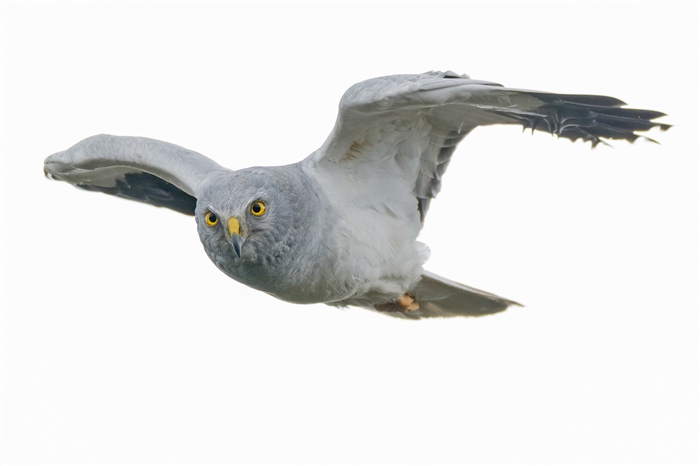
A male hen harrier - stunningly beautiful but still not welcome in large parts of our uplands. Pete Morris (RSPB)
We can reveal that two hen harrier nesting attempts failed in suspicious circumstances near the brood management site in 2019. To date, this fact has not been publicly mentioned by Defra or Natural England (NE), not even in their own brood management report. Why is this?
Let’s rewind a bit.
In January 2016 Defra launched its Hen Harrier Action Plan, which included the controversial brood management scheme, to be carried out by Natural England (NE). This involves removing hen harrier eggs or chicks from driven grouse moors when pairs nest within 10km of each other on a grouse moor. The birds are then reared in captivity before being released into upland habitat. The RSPB does not support brood management: we believe that illegal persecution must be tackled first and foremost. The RSPB and Dr Mark Avery are both currently in appeal proceedings against brood management.
The brood management trial, due to run for five years, started in 2019 on the Swinton Estate in North Yorkshire. Five chicks were removed from a nest, fitted with satellite tags, and released elsewhere later that season. Along with another pair on the estate, this was the first successful breeding of hen harriers in North Yorkshire since 2007. This area of North Yorkshire, dominated by driven grouse estates, has an appalling history of raptor persecution and repeated hen harrier breeding failures due to suspected human interference.
However, in August 2019, Defra and NE announced triumphantly ‘A Record Breaking Year for Hen Harrier breeding’ with 15 nests producing 47 chicks. In fact, only 12 nests were successful. In relation to the three unsuccessful nests it stated: ‘The three nests which failed were all in Northumberland – two were lost to bad weather and the third was predated’.
Twelve successful nests is a far cry from the 300 breeding pairs England could support.
More nest failures
However, the government media release announcing the 2019 breeding results filed to mention another two failed nesting attempts on grouse estates in North Yorkshire, within just five kilometres of the brood managed pair. We don't know who may have been responsible for these failures. NE knew all about these, and had spoken with North Yorkshire Police, so why miss out this part of the story?
One of these failed nests was on the edge of an estate. As well as on-the-ground monitoring information, we also received disturbing information from a very reliable source which may – we don’t know for sure – explain why this nest failed. Our source told us that a gamekeeper from another nearby estate had shot the male bird and the nest site had later failed. Whilst this is only an allegation, it did fit with the events on the ground, which were unknown to the person who contacted us. This information was passed to the police and the National Wildlife Crime Unit.
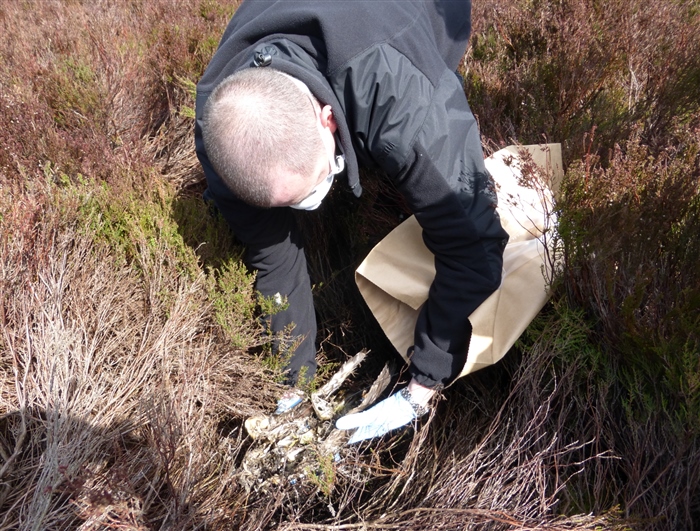
The body of hen harrier 'River' being recovered by North Yorkshire Police in April 2019. She had been shot. H Jones (RSPB)
Seeking information
The RSPB made requests under Freedom of Information (FOI) and Environmental Information Regulations (EIR) to Defra, Natural England, North Yorkshire Police and the National Wildlife Crime Unit. We asked for details of any communication exchanges since the start of November 2018 –
Amongst the material supplied by NE was confirmation they had received from the police the information, originally from the RSPB, about the allegation that a gamekeeper had shot the male of one of the failed nesting pairs.
However, we were surprised to see that there was no Defra or NE correspondence, either internal or with other government agencies or sporting estates, concerning the two nesting attempts which had failed in highly suspicious circumstances.
As part of the brood management scheme there is a requirement ‘To produce an annual report to be assessed by Natural England ornithologists, to assess the progress of the trial’. We decided to wait to see what was in this report. We understand this was completed earlier this year so why it has not been published online is unknown. However, we were recently sent a copy of this report obtained via an EIR request by a Raptor Worker. The report introduction states: ‘In 2019 an estate in North Yorkshire had two Hen Harrier nests on it within 10km of each other. Under the trial parameters this qualified them to undertake brood management. This report deals with the experience gained and lessons learnt form undertaking the brood management intervention on one of these two nests’.
The report mainly focusses on the technical aspects of brood management. You would have hoped the suspicious failure of two nesting attempts so close to the brood management location fell under ‘experience gained & lessons learned’. Even if NE claim this is outside the remit of the report, then we are still left asking the question: were NE ever going to publicly mention these failed nesting attempts? I suspect not.

A female hen harrier - just a handful of breeding pairs in England, though there is enough habitat for over 300. Pete Morris (RSPB)
A lack of openness
This inconvenient truth is not in their joint August 2019 media release. It doesn’t feature in any of their correspondence supplied to us, or the 2019 brood management report. It was not even raised at the last two Raptor Persecution Priority Delivery Group meetings post August 2019.
It would seem important for Defra and NE to ensure absolute transparency about events that are taking place given the exposure the brood management scheme has received. This does not appear to have happened.
On 22 May this year NE announced that brood management licences were being renewed for 2020. Days later it emerged that all five brood-managed chicks from 2019 are now ‘missing’. The fact that there has been no update from Defra or NE this year about these birds, and what information is available had to be requested, displays a lack of openness. Whether persecution is behind the disappearance of some, or even all, of these birds, is unknown, though the decision to use a different, and possibly less reliable, type of satellite tag has further clouded the picture.
Hopefully, going forward we will all be given real transparency about the BM process and on the threats still being faced by our hen harriers.

A male hen harrier - stunningly beautiful but still not welcome in large parts of our uplands. Pete Morris (RSPB)
We can reveal that two hen harrier nesting attempts failed in suspicious circumstances near the brood management site in 2019. To date, this fact has not been publicly mentioned by Defra or Natural England (NE), not even in their own brood management report. Why is this?
Let’s rewind a bit.
In January 2016 Defra launched its Hen Harrier Action Plan, which included the controversial brood management scheme, to be carried out by Natural England (NE). This involves removing hen harrier eggs or chicks from driven grouse moors when pairs nest within 10km of each other on a grouse moor. The birds are then reared in captivity before being released into upland habitat. The RSPB does not support brood management: we believe that illegal persecution must be tackled first and foremost. The RSPB and Dr Mark Avery are both currently in appeal proceedings against brood management.
The brood management trial, due to run for five years, started in 2019 on the Swinton Estate in North Yorkshire. Five chicks were removed from a nest, fitted with satellite tags, and released elsewhere later that season. Along with another pair on the estate, this was the first successful breeding of hen harriers in North Yorkshire since 2007. This area of North Yorkshire, dominated by driven grouse estates, has an appalling history of raptor persecution and repeated hen harrier breeding failures due to suspected human interference.
However, in August 2019, Defra and NE announced triumphantly ‘A Record Breaking Year for Hen Harrier breeding’ with 15 nests producing 47 chicks. In fact, only 12 nests were successful. In relation to the three unsuccessful nests it stated: ‘The three nests which failed were all in Northumberland – two were lost to bad weather and the third was predated’.
Twelve successful nests is a far cry from the 300 breeding pairs England could support.
More nest failures
However, the government media release announcing the 2019 breeding results filed to mention another two failed nesting attempts on grouse estates in North Yorkshire, within just five kilometres of the brood managed pair. We don't know who may have been responsible for these failures. NE knew all about these, and had spoken with North Yorkshire Police, so why miss out this part of the story?
One of these failed nests was on the edge of an estate. As well as on-the-ground monitoring information, we also received disturbing information from a very reliable source which may – we don’t know for sure – explain why this nest failed. Our source told us that a gamekeeper from another nearby estate had shot the male bird and the nest site had later failed. Whilst this is only an allegation, it did fit with the events on the ground, which were unknown to the person who contacted us. This information was passed to the police and the National Wildlife Crime Unit.
The body of hen harrier 'River' being recovered by North Yorkshire Police in April 2019. She had been shot. H Jones (RSPB)
Seeking information
The RSPB made requests under Freedom of Information (FOI) and Environmental Information Regulations (EIR) to Defra, Natural England, North Yorkshire Police and the National Wildlife Crime Unit. We asked for details of any communication exchanges since the start of November 2018 –
- in relation to hen harrier brood management in North Yorkshire plus any suspected, potential or confirmed persecution incidents involving hen harriers.
- with sporting estates in North Yorkshire in relation to hen harrier brood management or any suspected, potential or confirmed persecution incidents involving hen harriers.
Amongst the material supplied by NE was confirmation they had received from the police the information, originally from the RSPB, about the allegation that a gamekeeper had shot the male of one of the failed nesting pairs.
However, we were surprised to see that there was no Defra or NE correspondence, either internal or with other government agencies or sporting estates, concerning the two nesting attempts which had failed in highly suspicious circumstances.
As part of the brood management scheme there is a requirement ‘To produce an annual report to be assessed by Natural England ornithologists, to assess the progress of the trial’. We decided to wait to see what was in this report. We understand this was completed earlier this year so why it has not been published online is unknown. However, we were recently sent a copy of this report obtained via an EIR request by a Raptor Worker. The report introduction states: ‘In 2019 an estate in North Yorkshire had two Hen Harrier nests on it within 10km of each other. Under the trial parameters this qualified them to undertake brood management. This report deals with the experience gained and lessons learnt form undertaking the brood management intervention on one of these two nests’.
The report mainly focusses on the technical aspects of brood management. You would have hoped the suspicious failure of two nesting attempts so close to the brood management location fell under ‘experience gained & lessons learned’. Even if NE claim this is outside the remit of the report, then we are still left asking the question: were NE ever going to publicly mention these failed nesting attempts? I suspect not.

A female hen harrier - just a handful of breeding pairs in England, though there is enough habitat for over 300. Pete Morris (RSPB)
A lack of openness
This inconvenient truth is not in their joint August 2019 media release. It doesn’t feature in any of their correspondence supplied to us, or the 2019 brood management report. It was not even raised at the last two Raptor Persecution Priority Delivery Group meetings post August 2019.
It would seem important for Defra and NE to ensure absolute transparency about events that are taking place given the exposure the brood management scheme has received. This does not appear to have happened.
On 22 May this year NE announced that brood management licences were being renewed for 2020. Days later it emerged that all five brood-managed chicks from 2019 are now ‘missing’. The fact that there has been no update from Defra or NE this year about these birds, and what information is available had to be requested, displays a lack of openness. Whether persecution is behind the disappearance of some, or even all, of these birds, is unknown, though the decision to use a different, and possibly less reliable, type of satellite tag has further clouded the picture.
Hopefully, going forward we will all be given real transparency about the BM process and on the threats still being faced by our hen harriers.
No prosecution for shooting of a hen harrier in Bowland
On 18 October 2019 a member of the public witnessed what he believed
to be the shooting of an adult male hen harrier near White Syke Hill in
the Forest of Bowland Area of Outstanding Natural Beauty (AONB).
North Yorkshire Police (whose force area covers that tiny part of Bowland) put out an appeal for information five months later (see here).
A few days later, North Yorkshire Police announced that an arrest had been made in this investigation and the suspect had been released pending the results of a forensic analysis (see here).
[A male hen harrier, photo by Eddie Maguire]
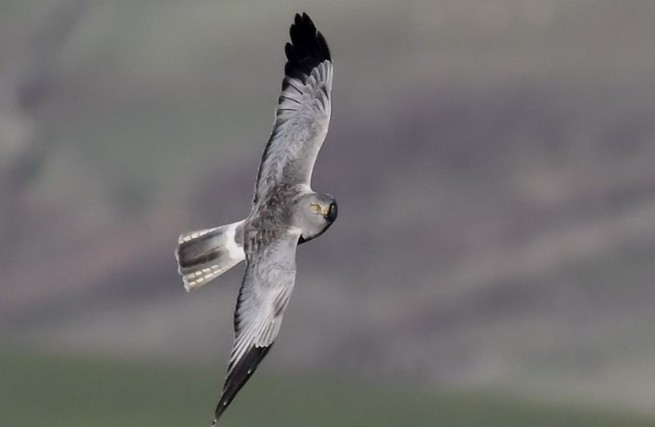
Unfortunately the police have now concluded there is insufficient evidence to proceed with a prosecution.
Inspector Matt Hagen of North Yorkshire Police’s Rural Task Force said: “This case is an all too familiar scenario where we have information from a credible source, but unfortunately the evidence is not strong enough to meet the threshold where we would ask the Crown Prosecution Service to make a charging decision, even after the arrest and interview of a suspect.
I would like to take this opportunity to encourage anyone with any information regarding any individuals who are involved in raptor persecution to come forward and report it to the police and assure them they will be taken seriously and the matter will be investigated.”
This is a disappointing result, of course, but as many blog readers will know, securing sufficient evidence in these cases is notoriously difficult. Full credit to North Yorkshire Police for giving it a go. This case didn’t fail for lack of effort and at least that suspect will now be on their radar.
As far as we’re aware, North Yorkshire Police are still investigating the alleged shooting of another hen harrier on another Yorkshire grouse moor (see earlier blog here) so fingers crossed for a prosecution on that one.
Now that the Bowland investigation has ended, part of the eyewitness report of the hen harrier being shot and removed from the moor has been published by the RSPB (see here) and it makes for a disturbing read.
North Yorkshire Police (whose force area covers that tiny part of Bowland) put out an appeal for information five months later (see here).
A few days later, North Yorkshire Police announced that an arrest had been made in this investigation and the suspect had been released pending the results of a forensic analysis (see here).
[A male hen harrier, photo by Eddie Maguire]

Unfortunately the police have now concluded there is insufficient evidence to proceed with a prosecution.
Inspector Matt Hagen of North Yorkshire Police’s Rural Task Force said: “This case is an all too familiar scenario where we have information from a credible source, but unfortunately the evidence is not strong enough to meet the threshold where we would ask the Crown Prosecution Service to make a charging decision, even after the arrest and interview of a suspect.
I would like to take this opportunity to encourage anyone with any information regarding any individuals who are involved in raptor persecution to come forward and report it to the police and assure them they will be taken seriously and the matter will be investigated.”
This is a disappointing result, of course, but as many blog readers will know, securing sufficient evidence in these cases is notoriously difficult. Full credit to North Yorkshire Police for giving it a go. This case didn’t fail for lack of effort and at least that suspect will now be on their radar.
As far as we’re aware, North Yorkshire Police are still investigating the alleged shooting of another hen harrier on another Yorkshire grouse moor (see earlier blog here) so fingers crossed for a prosecution on that one.
Now that the Bowland investigation has ended, part of the eyewitness report of the hen harrier being shot and removed from the moor has been published by the RSPB (see here) and it makes for a disturbing read.
Share this:
Thursday, 11 June 2020
Monday, 13 April 2020
North of England Raptor Forum
NERF’s ‘Most Wanted’
‘The price of success is hard work, dedication to the job at hand and the determination that whether we win or lose we have applied the best of ourselves to the task at hand’.The thoughts, as expressed by Lombardi, exactly identify the characteristics that NERF looks for in the individuals who are awarded the NERF Certificate of Appreciation. All of the recipients have demonstrated their total commitment to protecting birds of prey in the North of England.
Vince Lombardi 1913 – 1970
The dedication of two legendary Raptor Workers (Bill Hesketh and Bill Murphy) is recognised by NERF
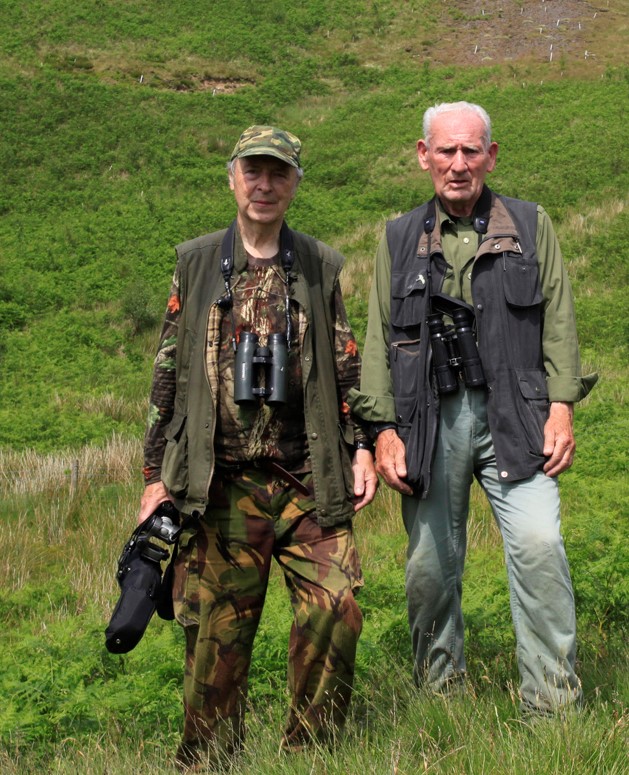
The names Bill Hesketh and Bill Murphy are synonymous with monitoring and protecting birds of prey in the Forest of Bowland. It is impossible to overstate the fantastic contribution that they have made to our collective knowledge over five decades. Not only have they collected a vast wealth of data they have touched the lives of all of us who know them.
Mick Demain is an extremely talented wildlife artist, a member of NERF and he is also the RSPB Warden working on the United Utilities / RSPB Reserve in the Forest of Bowland. Here Mick recounts his relationship with the Bills.
“I first encountered Bill Hesketh and Bill Murphy, affectionately known as the two Bills, on a long sweeping windswept fell on the eastern edge of Bowland, they approached me and introduced themselves and the conversation lasted no more than a couple of minutes before we parted, the date was 10th May 1992 and although we didn’t know it at the time it would be eighteen years before our paths crossed again and this time we would go on to become great friends.
In 2010 I became involved with the RSPB in Bowland and in 2012 I became RSPB seasonal warden at which time I adopted a team of volunteers, including the Bills who had a great knowledge of Bowland and its birds. Their experience, going back fifty years, has been invaluable to the RSPB.
As the years have passed the friendship has grown and they have been a massive help to me with the fieldwork and great companions on many walks into remote areas to check and monitor sites. I can’t envisage a day when the Bills will not be here to help for they have become a part of Bowland and certainly for me it won’t be the same without them.
These two guys have put in countless hours at a considerable cost to themselves and the RSPB owes them a massive debt of gratitude.”
We all owe them a debt of gratitude and it is with great pleasure that we award the Bills NERF Certificates of Merit.
NERF
April 2020
Dr. Cathleen Thomas, PhD
Project Manager, RSPB Hen Harrier Life Plus Project
Monday, 3 February 2020
Help Bees By Not Mowing Dandelions
Help bees by not mowing dandelions, gardeners told. Plants provide key food source for pollinators as they come out of hibernation
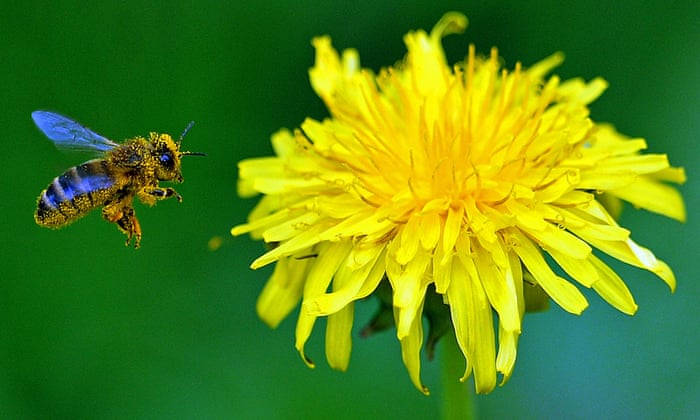 | |
| Each dandelion head has up to 100 individual flowers. Photograph: Janek Skarzynski/AFP/Getty Images |
Gardeners should avoid mowing over dandelions on their lawn if they want to help bees, according to the new president of the British Ecological Society.
Dandelions – which will start flowering in the UK this month – provide a valuable food source for early pollinators coming out of hibernation, including solitary bees, honey bees and hoverflies.
Each dandelion head contains up to 100 individual flowers, known as florets, which contain nectar and pollen. There are 240 species of dandelion in the UK.
Prof Jane Memmott said: “If dandelions were rare, people would be fighting over them. Because they’re common, people pull them out and spray them off and all sorts of horrible things. Just let them flower.”
Memmott, who took over as president of the BES at the start of this year, is also a professor of ecology at the University of Bristol.
She said gardeners should avoid planting too many “pompom shaped” flowers, such as old English roses and dahlia, because they focus so much of their energy on producing petals and have very little nectar and pollen. “As a rule, if you can see the pollen and nectar parts of a flower without pulling back petals, then it’s OK for pollinators,” she said.
Carrots that have flowered, or “bolted”, and onions in unkempt vegetable gardens are also some of the best plants for pollinators.
“People are a lot tidier than they used to be. This whole business of keeping your lawn clipped and pulling the weeds out is part of some British obsession with tidiness,” Memmott said. “If you look back at old pictures, people weren’t as tidy. I think bohemian untidiness is what we’re aiming for – you don’t want it to look like neglect.”
Leaving the grass to grow 8-10cm (3-4in) tall means clovers, daisies, self-heal and creeping buttercup can also flower. “You can’t personally help tigers, whales and elephants but you really can do something for the insects, birds and plants that are local to you,” said Memmott, who encouraged gardeners to halve the amount of mowing they do.
The global mass of insects is falling by 2.5% a year and many could be extinct within a century, according to a global scientific review last year.
The charity Buglife encourages people to leave a strip of garden that is cut only once in autumn and once in spring. “An awful lot of lawns, especially in older houses, will be built on old meadows so wildflowers come up quite quickly. In a new house they might take a bit longer as they could have had a turf put down,” said Paul Hetherington, the director of communications at Buglife.
Help bees by not mowing dandelions
Wednesday, 8 January 2020
Hen Harriers Again © Mark Avery
Poor old Duke
Mark 9 Comments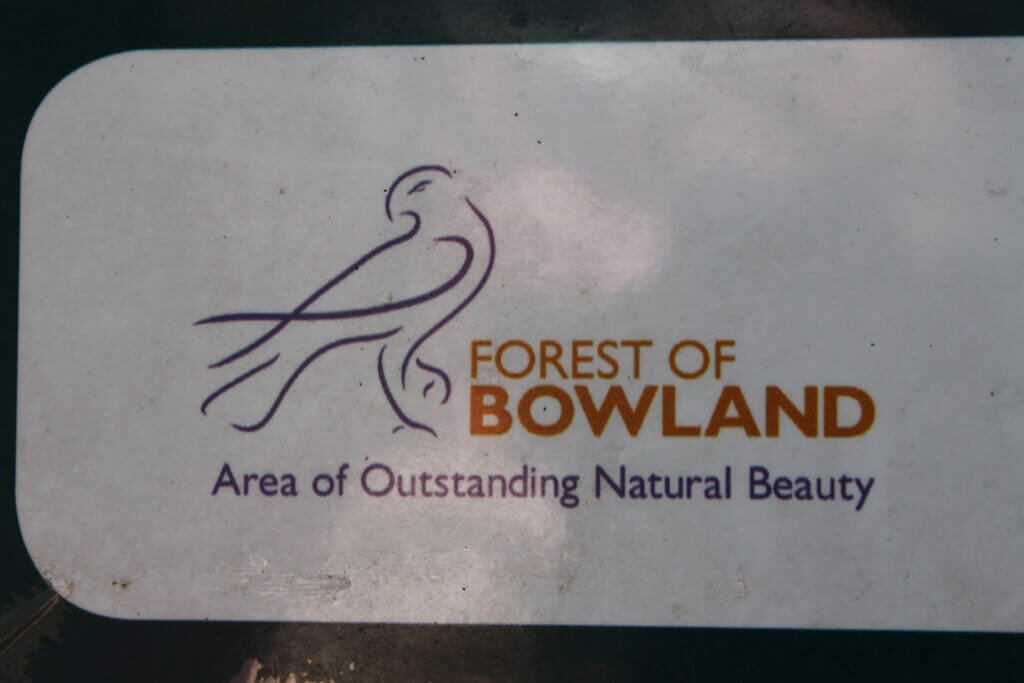
But those are large-scale analyses (and obviously powerful because of that), so let’s just illustrate what that actually means on the ground in one corner of the English uplands.
Let’s have a look at the Forest of Bowland Area of Outstanding Natural Beauty, whose logo happens to be a Hen Harrier. It’s not a random choice, this area has been at times the stronghold of this bird in England. Although it’s difficult to believe these days (when some recent years have seen a complete absence of breeding), there have often been double-figured numbers of Hen Harrier nests here in the past. And that’s why part of this area is designated by the UK as a Special Protection Area for birds under the EU Birds Directive. The Bowland Fells SPA qualified for this designation by holding significant proportion of the UK breeding population – 13 pairs over a period of years.
There are many landowners in this area but the three largest are United Utilities plc (what used to be called a water company – which owns part of this catchment to maintain water quality and which does have a few days grouse shooting on its land each year but cannot remotely be called a grouse moor), the Abbeystead Estate (owned by the Duke of Westminster) and the Bleasdale Estate (owned by businessman Jeremy Duckworth).
The land ownerships are roughly in the following proportions:
| Estate | % of HHSAs by area | % of Bowland Fells SPA by area |
|---|---|---|
| Abbeystead | 16 | 47 |
| United Utilities | 70 | 34 |
| Bleasdale | 9 | 10 |
| The rest | 5 | 8 |
Did you guess 2929? That’s more than 350 dead birds for each shooter – what sport eh? But those were the days when Abbeystead was owned by the Earls of Sefton, the Grosvenor family acquired the moor in 1980.
You’d think that a famous grouse moor, owned by His Grace the Duke of Westminster, usually the highest ranking UK-born individual in the Sunday Times Rich List, and the most recently created Dukedom in the UK, with a wealth of £10bn, would be in a perfect position to demonstrate the value of driven grouse moors for Hen Harriers – particularly at this former stronghold for the bird, and particularly because of his large land holding.
But poor old (actually, rather young) Duke of Westminster. No nesting Hen Harriers on Abbeystead this year despite there being five successful pairs on the adjacent United Utilities land (where the birds are guarded by volunteers organised by the RSPB and United Utilities). His Grace must be gutted. All that prime Hen Harrier habitat in an area whose very logo is the Hen Harrier, all those gamekeepers looking after the Hen Harriers and not a thing to show for it.
Maybe there’ll be lots next year, although recent history suggests not, as I am told (by local, experienced, raptor workers) that the last time that Hen Harriers nested successfully on the Abbeystead Estate was 2003 – so don’t hold your breath! All but one of the successful Hen Harrier nests in the last decade in Bowland has been on the United Utilities land.
So in passing we must note too, that the other large grouse shooting estate in Bowland has been unlucky in attracting and keeping safe Hen Harriers too – the Bleasdale Estate’s last reported successful Hen Harrier nest was in 1993. In fact, Bleasdale Estate has been unlucky with its breeding Peregrine Falcons too in recent years (see a disturbing video here).
It’s a shame that being very rich, and owning lots of land in a prime location doesn’t seem to guarantee the riches of successful Hen Harrier nests. I’d recommend that His Grace and Mr Duckworth get in touch with the RSPB team operating locally to discover the secret of getting successful Hen Harrier nests in the Bowland Fells. But until they do, can we hear a little less about how great are driven grouse moors for the threatened Hen Harrier, please?
For all sorts of reasons, I’d be delighted if you would give your support to this e-petition.
Subscribe to:
Posts (Atom)